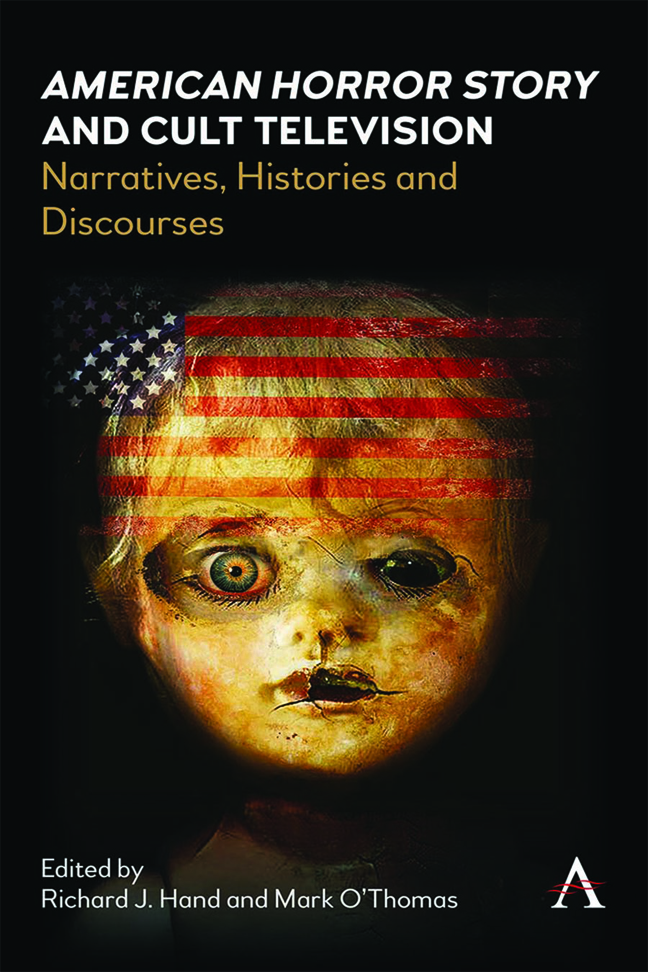Chapter 10 - Scaring with Otherness: American Horror Story and the Other Identity
Published online by Cambridge University Press: 01 March 2024
Summary
Introduction
The first warning was given in the first episode of ‘Murder House’, season one of AHS, in 2011. In the first episode, a little girl named Adelaide with Down's syndrome warns, ‘You are going to die there’. Later, the same girl warns again, more ominously, ‘You are going to die here’. Maybe if someone older we know and trust were to give such a warning, we might listen to them. However, the characters in the story ignore the girl. The consequences of their doing so are inherently predictable, and the story's flow confirms the predictable. Adelaide warns at the beginning of the story, etching it in viewers’ minds. Her warning indicates that horror does not just come from dark basements, deserted streets at night, haunted houses, the souls of the deceased, postapocalyptic zombies, creatures from outer space or serial killers. Horror can come from anywhere, any person or any situation – depending on how we perceive it. The context of our relationship with a place, person or situation is also essential for perceiving fear. Maybe we would not have been afraid if Adelaide had been a different girl. How and with what elements fear is presented to us are essential.
The horror genre thrives on many different elements. These elements are structured based on cinematography, sound, narrative and characterization. If all these elements are used successfully and appropriately balanced, the viewer will encounter a more successful experience of a sense of horror through the genre's narrative. This is because the horror genre is more successful when it is believable with its story, impressive with its visuals, surprising with its sound, and identifiable with its characters. AHS, which Ryan Murphy and Brad Falchuk created, was first screened in 2011. Every season, the show explores a different horror theme. This anthological structure has made it possible to examine the horror genre from a more diverse perspective. As a result, the series has been a success because it can appeal to a more diverse audience and those who like different narratives of the horror genre, revitalizing audience interest in the horror genre. Given the diversity of the horror elements used in AHS, finding a common method of examining the horror genre across all seasons of AHS is essential to determine the series’ place within the genre.
The horror genre has incorporated identity politics within literary and visual studies.
- Type
- Chapter
- Information
- American Horror Story and Cult TelevisionNarratives, Histories and Discourses, pp. 167 - 188Publisher: Anthem PressPrint publication year: 2023



